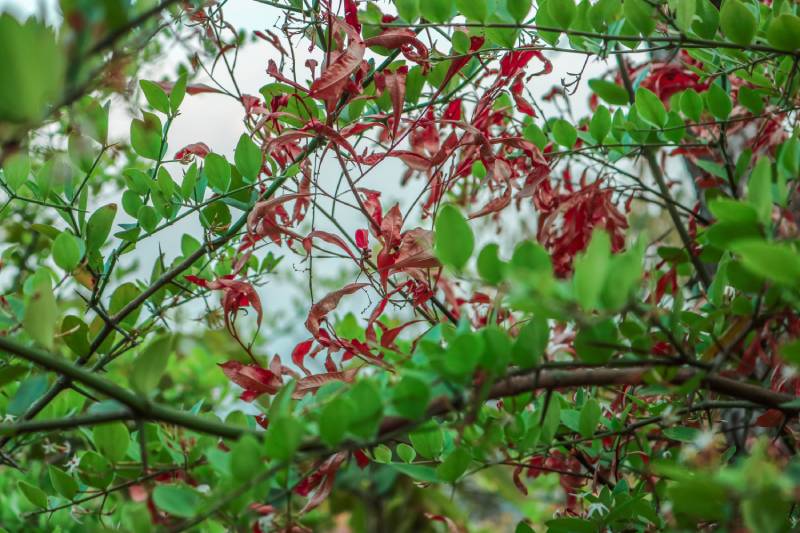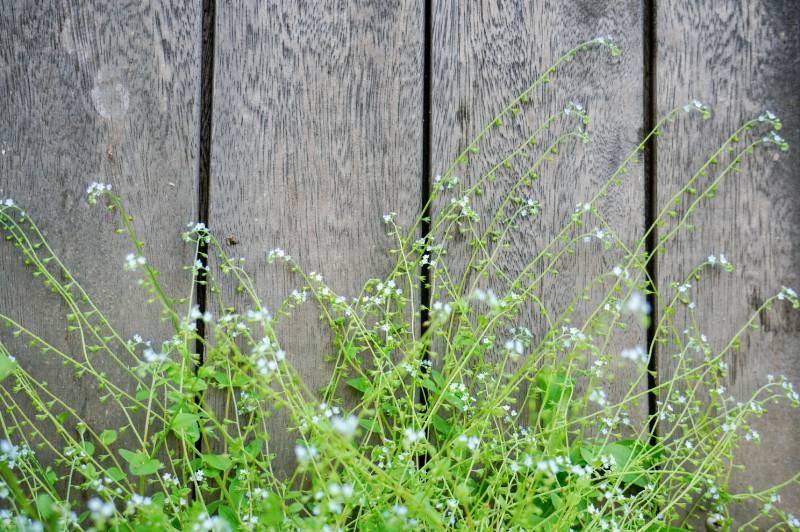All You Need To Know About Hydrangeas

Hydrangea paniculata is a blooming plant that could develop to the size of a small tree or a big shrub. Tree hydrangeas typically have several trunks and branch low to the ground. If you want to grow hydrangea trees, you should know that hydrangea care is a demanding work that must be done correctly.
Hydrangea is a beautiful blooming shrub that comes in a variety of colors and shapes. Hydrangea macrophylla is perhaps the most well-known, with snowball flowers that change colors depending on the soil quality. Another variation of hydrangea is the tree hydrangea. However, there are other varieties, Hydrangea paniculata ‘Grandiflora,’ often known as Pee Gee hydrangea, is one of the most popular.
It can reach a height of 25 feet (7.6 meters) and can be pruned to seem like a little tree. The tree hydrangea blooms in the middle of the summer and produces a beautiful display of flowers, making it one of the most attractive landscaping shrubs. If you bought a hydrangea tree from a greenhouse, the tips we’ve compiled below will help you cultivate a beautiful hydrangea tree.
Various Types of Hydrangeas
Summer is one of the most beloved seasons. It’s time for sun loungers, outside coffee, and the summer’s must-have flower: the hydrangea! This bushy garden classic isn’t a one-size-fits-all plant. Hydrangeas are available in five distinct kinds. While varieties vary, most hydrangeas love to be in direct sunlight first thing in the morning. Continue reading to learn about the numerous types of hydrangea.
1. Bigleaf Hydrangeas
Hydrangeas are also known as French hydrangeas, florist’s hydrangeas, and hortensia. This is the most common hydrangea species in the United States. Mophead, lacecap, and mountain hydrangeas are the three types of hydrangea macrophylla. Some mophead hydrangeas will grow well in cooler climates if the winter is not too cold and windy. The most susceptible situation for hydrangeas is being exposed to a freeze following a lengthy warm period. Additional security may be necessary in certain places.
● Mophead Hydrangeas
These are the most widely grown bigleaf hydrangeas. Many people identify them because of their huge purple, blue, and pink flower heads. Mophead and lacecap leaves are often dense and sharp, slightly glossy, and heart-shaped. Their teeth are crudely toothed on the edges. They are typically 4″-6″ long and 3″-5″ broad, although they can develop to be much bigger in exceptional situations. Since the leaf stems (petiole) are small, the leaves cling close to the main stems in most situations. Stems are frequently spotted with small black or crimson streaks or mottling. The leaf shapes of mop heads and lacecaps are identical.
● Lacecap Hydrangeas
Hydrangea macrophylla normalis is the scientific name for lacecap hydrangeas. Lacecaps are indistinguishable to mop heads but for the form of their blossoms. The healthy flowers are the little buds in the middle of the lacecap, while the barren flowers are the enormous showy blooming around the outside edge.
● Mountain Hydrangeas
Hydrangea macrophylla ssp. serrata is the scientific name for Mountain Hydrangeas. Bigleaf hydrangeas are the least frequent. Although the blooms are tiny, the plants are exceptionally robust and designed to withstand tough winters and regions.
2. Smooth Hydrangeas
These bushes, often known as feral hydrangeas, are a type of hydrangeas that are indigenous to the United States. These plants are resistant in zones 4 to 7 and can withstand hotter conditions. Due to their size, they are occasionally used as a barrier. Arborescens leaves are often heart-shaped, slender, and puffier than mophead leaves (macrophylla). They have a rougher texture and a matte finish than the smooth mophead leaf. The long leaf stalks (petiole) separate the leaf from the main stem. Smooth hydrangeas should be planted more frequently because they thrive in both hot and cold conditions.
Annabelle hydrangea is the most well-known type, which produces a cold-hardy hydrangea that resembles a mophead and needs meticulous hydrangea care. It starts off white and turns a lovely light green tint as it matures. It has the ability to grow as far north as Zone 3a. Incrediball hydrangea is a new and enhanced variant of Annabelle that was released recently. It’s essentially the same plant, but with increased stem strength to support the blossoms and more flowers.
3. Panicle Hydrangeas
The cone-shaped flower heads of Panicle hydrangeas are well-known. These enormous flowers usually start off white and then turn pink. These hydrangeas are the most frost resilient, growing in zones 3 to 7. All paniculatas are cold hardy and may be grown as far north as Zone 3a in the United States. In the south, most paniculatas thrive just as well. The variation H. paniculata ‘Grandiflora’, on the other hand, thrives in colder climes.
When compared to other hydrangeas, the leaves of PG hydrangeas are pretty straightforward to distinguish. They are generally 3″-6″ long and 3″-4″ broad, they are shorter, narrower, and harsher than mophead hydrangea leaves. Some kinds have finely serrated edges, while others have coarsely toothed edges. They have a matt surface and are medium green in color. Three leaves develop from a stem-node and are spread in a circular pattern around the junction, which aids in the recognition of the H. paniculata. The only hydrangeas that grow into trees are PG hydrangeas. Their primary stem(s) can be shaped into beautiful trunks.
4. Climbing Hydrangeas
As they’re truly tendrils, they’re simple to spot. Climbing hydrangeas are native to Asia (Japan, Korea, and Siberia) and may be grown in zones 4 to 8. They’re becoming increasingly popular as a result of their remarkable ability to climb on buildings and produce huge flowers. These Hydrangea petiolaris, also known as Hydrangea petiolaris, may reach a height of 30 to 80 feet. The Japanese false-hydrangea vine, which grows 15 to 30 feet tall, is another climbing hydrangea. Schizophragma hydrangeoides is the scientific name for this plant, which is endemic to Japan. The plants aren’t exactly hydrangeas, but they look a lot like them.
5. Oakleaf Hydrangeas
The Oakleaf Hydrangea takes its name from its leaves. It has leaves that resemble those of a red oak. The leaves might be as little as 4″ X 4″ or as large as 10″ X 10.” These hydrangeas’ foliage also changes hue in the fall, and they are the only hydrangeas that do so. From orange to crimson to mahogany, the hue will shift. This is a lovely hydrangea that blooms profusely in the spring and may be grown in mild shade or full sun. In colder locations than the macrophylla above, it will grow unprotected (mop heads and lacecaps). According to some sources, it can withstand temperatures as low as Zone 4b/5a. Another necessity for the oakleaf to blossom properly is for it to have extremely sunny, rather hot summers. Furthermore, it does not thrive in locations that are always damp. Learn more about the hydrangea Oakleaf.
Hydrangea Plants: How to Take Care of Them
Hydrangea care is essential if you intend to cultivate them. In the summer, all hydrangea plants, especially those placed in full sun, require watering. In hot-summer areas, grow them in a place that receives some afternoon shade. Tree hydrangeas, such as Pee Gee hydrangeas, may grow in practically any soil, including acidic or alkaline, as long as it drains well. The superficial roots do not pose a threat. As not everyone is familiar with Hydrangea care, we’ve compiled a list of pointers below to assist you understand it completely.
● Light Requirements
Paniculatas prefer full to partial sun. The climate in your area might help you decide if your hydrangea needs more sun or more protection. The hydrangea tree thrives in more sun in cooler areas, while partial shade is preferable in hotter areas. They should get at least 4 hours of direct sunlight every day. If you don’t expose your flowers to the harshest sun during the day, they will survive longer.
● Watering
Hydrangeas thrive on damp to medium-wet soil of all kinds. The leaves will droop and wilt if the soil becomes entirely dry. While your hydrangea may receive enough water naturally if there is enough rainfall in the springtime and mid-summer, you must hydrate the ground in the summer and during extreme weather events. Hydrangeas should be watered with a sprayer, and only at the root level, so that no water hits the foliage. Water that remains on the leaves for too long might encourage fungal and bacterial infections, so water early in the morning so the leaves have time to dry before nightfall.
● Size & Growth
Prior to actually planting outdoors, make sure you have all of the pertinent knowledge on the hydrangea tree’s potential size. Hydrangea trees grow to be between 8 and 15 feet tall and 8 feet broad when they reach an age. Hydrangea paniculatas, such as Hydrangea paniculata ‘Grandiflora’ or Pee Gee, can reach a height of 25 feet. This hydrangea could be grown as a shrub or as a tree with proper trimming. When the plant is still young, greenhouses will usually trim it into a tree-like form. Alternatively, to encourage the hydrangea to develop like a tree, you’ll need to eliminate side branches as they arise, as well as any suckering shoots at the root.
● Fertilizing
Hydrangeas don’t require a lot of fertilizer. They only require fertilizer once in the spring time and once when the blooms fade in the autumn. The hydrangea tree will also benefit from adding compost to the soil over the summer. Hydrangea fertilizers come in a variety of formulas and dose recommendations. Some of the milder solutions may need to be used every two weeks. To avoid fertilizer burn and the resulting plant damage, make sure to follow the fertilizer’s dose instructions to the letter.
● Moisture & Temperatures
Hydrangea paniculata may be grown in climatic zones 3 to 8. In comparison to other types, they are cold resistant. They thrive in moderately humid environments and benefit from shade in hotter regions.
● Type Of Soil
Although hydrangeas like somewhat acidic soil, the paniculata may thrive in alkaline soil if it’s rich in organic matter and drains properly. If you don’t have sufficient drainage, your hydrangeas’ roots will stagnate in water and decay. As a result, if you have spots in your yard that naturally drain well, choose them over regions where water tends to pool and drain slowly.
● Potting & Repotting
The Hydrangea paniculata is not appropriate for growing in a container because of its height. Try Hydrangea macrophylla or Mountain hydrangea if you wish to cultivate a hydrangea in a container. As the base of potted hydrangeas expands, they should be moved to a larger planter to accommodate them, and the pot should not dry out too quickly. If you’re going to plant a hydrangea in your yard from a florist or a conservatory, be sure it’s a cold-hardy type for your location. Hydrangea trees should be planted in the spring, when there is no risk of a late frost harming fragile green expansion or buds. Your hydrangea tree may demand some extra buffering or reinforcement over the first two years until the main stem is robust adequately. The additional support will aid in its upward growth as well as protect the plant from toppling over in the event of heavy gusts.
Bottom Line
To conclude, the foregoing information about hydrangeas discusses what it is, what varieties it comes in, and how to effectively care for it. So, if you want to cultivate one of these plants, make sure you follow all of the instructions carefully in order to properly take care of it.










Leave a Reply